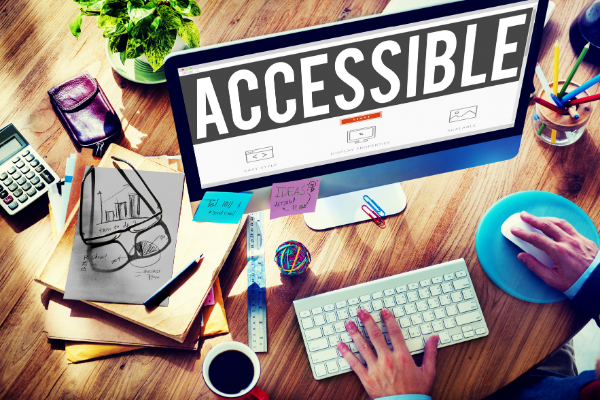Insights
INSIGHTS
All Topics
My Account
Virtual fundraising events: 3 questions charities need to be asking about accessibility
06 Nov 2020by Chloe Green
Are your charity’s virtual fundraising events accessible to a wide range of people? Here’s a quick checklist of key concerns that charities should address before launching their next online event
Compared with the fundraising landscape of the first national lockdown, the danger of ’compassion fatigue’ or ’empathy overload’ means that persuading audiences to part with their hard-earned income is even more of a challenge for charities. And with the pandemic stretching on with no end in sight, and so many causes asking for help, who can blame people for becoming apathetic and wanting to switch off from all the caring and giving?
Charities have shown great resilience and flexibility by pivoting their fundraising events to the digital world in ways that are both engaging and compelling. But now more than ever, charities seeking the empathy of donors need to reflect that same empathy in the way they deliver their virtual fundraising events.
These events are able to reach a far broader and more diverse audience than traditional physical ones, so it’s critical that charities do everything they can to make it a positive and enjoyable experience and remove any potential obstacles to participating. The last thing that will encourage someone to give is to be made to feel excluded, singled out or frustrated by their experience. When every donation counts, improving accessibility should be a number one priority for charities running fundraising events on digital platforms.
What makes a virtual event inclusive?
According to disability charity Scope, there are 13.9 million disabled people in the UK. That’s as many as 19% of working-age adults, rising to 45% of those 65 or older. But when we talk about accessibility, that includes not just those who are registered as disabled, but those who may be experiencing a temporary condition or situation.
When we look at accessibility like that, it encompasses a much broader range of ways that people might face difficulties understanding or consuming digital media. Accessibility is usability, and what’s great is that making things easier for one perceived set of needs makes often things easier for everyone.
Before choosing a virtual event platform, charities should explore what basic built-in features there are for accessibility and how customisable they are. Here’s a list from the Business Disability Forum exploring some of the main video conferencing apps and their accessibility scores.
Charities should include people from a range of abilities, disabilities, ages and social backgrounds in their planning, taking as many perspectives onboard as possible. Make it clear in your marketing
ahead of time that there will be a way for people with different needs to take part or request accommodations, and make sure you’ve budgeted for any accessibility elements that may need to be added. Read through the Inclusive Design Principles and this accessible UX checklist for charities, and ask yourself if your event holds up to them.
While planning their virtual events and any materials around the event itself, charities should be asking themselves these three key questions with a few example considerations:
1.) Does my virtual fundraising event consider the needs of people with sensory disabilities?
The nature of platforms like video or livestreaming mean that there will need to be considerations for people with sensory impairments, sight and hearing loss, and people who are non-verbal. For example:
- Having captioning or sign language interpretation
- Including audio descriptions
- Ensuring your content works with screen reader technology
- Making sure that there is sufficient colour contrast and having magnification available
- Not having background sound that is very loud or audio that is unclear
- Having speakers or hosts say their names every time they speak
- Including multiple ways to participate such as speaking, typing and signing.
2.) Does my virtual fundraising event consider the needs of people with cognitive or intellectual impairments?
Everyone needs to be able to understand how to participate in your fundraising content and to process it safely and effectively, from people with only basic digital skills to those with a range of neurodiverse needs such as autism, learning difficulties, attention deficit disorder, epilepsy, dyslexia or a mental illness.
This means:
- Providing clear directions and tips on how to participate and donate
- Providing step by step instructions for people unfamiliar with the platform and not assuming they already know how to use it - Using simple language, avoiding jargon and working towards ’readability’ in written content
- Leaving enough time to process information and repeating key information
- Making sure visuals and text are clear and uncluttered
- Not including flashing, strobing, very bright lights or unnecessary animation
- Having warnings in place for stimuli that might be triggering, traumatic or upsetting
3.) Does my virtual fundraising event consider the needs of people without access to tech or the internet?
Digital exclusion can take many forms. Have you thought about how you might include people who don’t have the skills or resources to access digital at all?
Giving people options is always best, like the choice to dial-in by phone or participate in other ways without a computer. ’Hybrid events’ that combine digital with non-digital experiences are seeing popularity.
Our Events
Charity Digital Academy
Our courses aim, in just three hours, to enhance soft skills and hard skills, boost your knowledge of finance and artificial intelligence, and supercharge your digital capabilities. Check out some of the incredible options by clicking here.


















